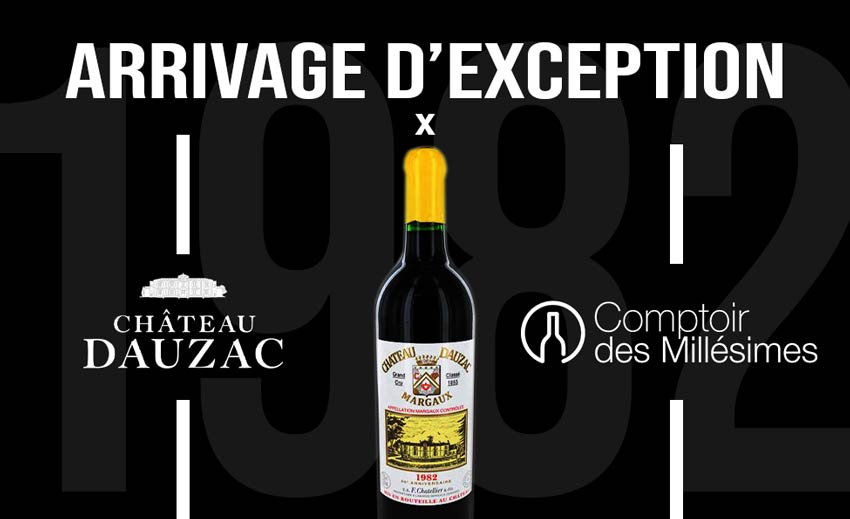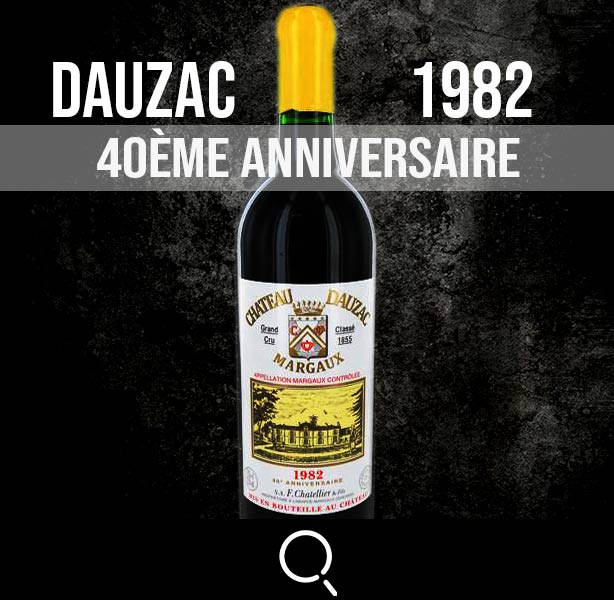Here's one of our superb partner estates: the Château Dauzac. This is an exceptional wine located in the Margaux appellation area. Every year, the domaine reserves an allocation of their finest bottles for us. Our dear partner winemakers recently offered us a superb batch of the Château Dauzac 1982 ! A rare opportunity to acquire these fine bottles and offer them for sale to our loyal customers.
A 1982 vintage bottled back at the estate!
This is an exceptional old vintage, and the bottles have been fully checked by Château Dauzac's oenologist: refresher course and change the cap. The wine is fabulous!
For the occasion, the labels are recognizable by the words "40th anniversary"; a special edition!
Tasting notes; Here's what the estate's oenologist had to say: "The color is limpid and dark plum. The nose has notes of sweet blackcurrant, crushed prunes and jammy aromas. The palate is full-bodied and dense, with spicy aromas mingling with licorice, pepper and vanilla. The finish is fresh, with hints of eucalyptus. The aromatic richness of this 1982 Château Dauzac is impressive!
-
Would you like to order this wine?
-
Here's the video of the estate!
Introducing the Dauzac winery
The 42-hectare vineyard of Château Dauzac is planted with 69 % of Cabernet Sauvignon, 29 % of Merlot and 2 % of Petit Verdot. This represents a change in the vineyard. Previously, up to 5% of Cabernet Franc were planted. But these vines have since been removed. It is planted in a single large block, which is quite rare, especially for the Margaux appellation. While Château Dauzac boasts 42 hectares of vines, it also has a further 120 hectares of farmland, greenery and forests on its estate. The estate also owns 4 hectares of vines in the Haut Médoc appellation.
The vines are between 35 and 40 years old. However, they also have old vines, some of which are nearly 80 years old. But their old vines are not planted on their best plots. Or with the right rootstock, so slowly but surely, these vines will all end up being replanted. The vineyard is planted at a density of 10,000 vines per hectare. Experiments are being carried out on a small 0.6-hectare plot of Cabernet Sauvignon planted on its own ungrafted rootstock. These vines are grown using 100% biodynamic techniques. 2021 marks the first vintage in which these vines will be used to produce a wine from 100% Cabernet Sauvignon. This is a rarity, as very few Bordeaux producers make 100% Cabernet, and even fewer from ungrafted vines.







